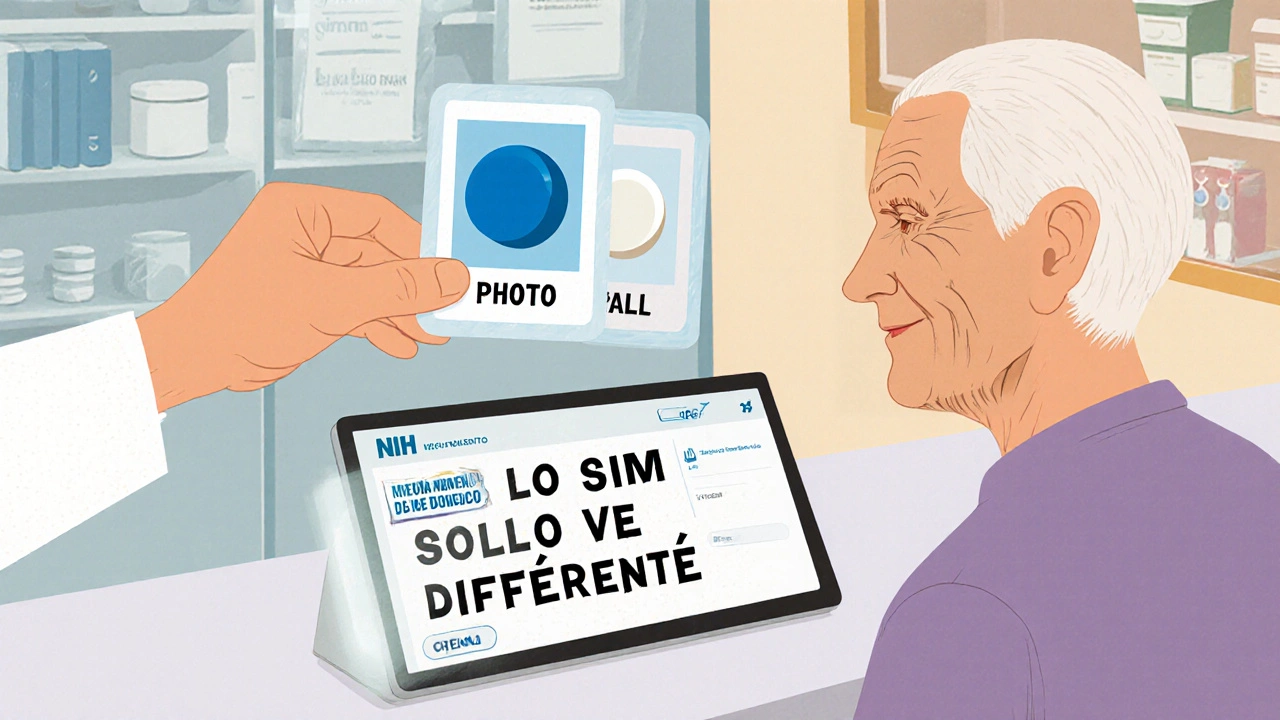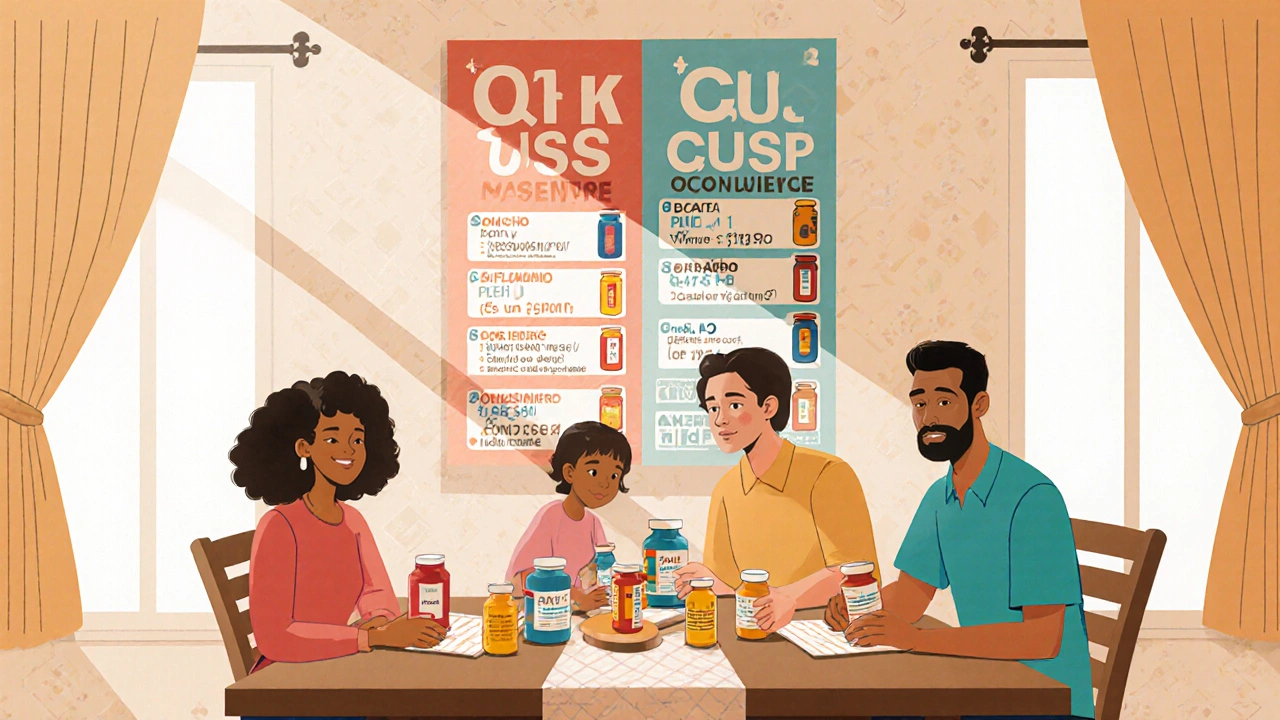Many Spanish-speaking patients in the U.S. are told they can save money by switching to a generic medication, but they don’t always understand what that really means. They see a pill that looks different - maybe a different color, shape, or size - and wonder if it’s still the same medicine. Some stop taking it altogether, thinking it’s weaker or unsafe. This isn’t just confusion; it’s a serious gap in health literacy that puts lives at risk.
The good news? There are now reliable, free Spanish-language tools designed specifically to help Spanish-speaking patients understand generic medications. These aren’t just translated brochures. They’re practical, culturally aware resources built with real patient concerns in mind - like the fear that a cheaper pill won’t work, or the frustration when a pharmacist says "es lo mismo" but doesn’t explain how.
What Exactly Is a Generic Medication? (In Simple Spanish)
The term "medicamento genérico" doesn’t mean "cheap" or "fake." It means the same active ingredient as the brand-name drug, at the same dose, working the same way in your body. The U.S. Food and Drug Administration (FDA) requires generic drugs to meet the same strict standards for safety, strength, and quality as brand-name drugs. The only differences are in the inactive ingredients - things like dyes or fillers - which affect appearance, not effectiveness.
For example, the brand-name drug Lipitor (atorvastatin) and its generic version both lower cholesterol the same way. The generic might be round and white instead of blue and diamond-shaped, but it does the exact same job. A 2022 study from the University of Miami Miller School of Medicine found that when patients saw side-by-side photos of brand and generic pills with clear labels, confusion dropped by 37%.
Where to Find Trusted Spanish-Language Resources
Not all Spanish materials are created equal. Some are poorly translated, use outdated terms, or ignore regional differences. Here are the most reliable, up-to-date resources available right now:
- Agency for Healthcare Research and Quality (AHRQ) - "Mi Lista de Medicamentos": This free, downloadable PDF (updated February 2024) helps patients track all their medications - brand and generic - in one place. It includes prompts like: "¿Cuál es el nombre genérico?" and "¿Por qué lo tomo?" It’s used in clinics nationwide and scored 4.7 out of 5 in patient clarity tests.
- MedlinePlus.gov - "Medicamentos de marca y genéricos": This bilingual resource offers side-by-side comparisons of drug names, uses, and warnings. It also includes a glossary of common terms like "medicamentos de venta libre" (over-the-counter) and "efectos secundarios" (side effects).
- National Institutes of Health - "Medicamento Genérico" App: Launched in September 2023, this free mobile app lets users scan a pill to identify it, compare brand and generic versions with photos, and even hear how to pronounce drug names in Spanish. It’s been downloaded over 147,000 times.
- Wake AHEC Pharmacy Translation Card: Designed for healthcare providers, this laminated card includes phrases like: "Esta medicina tiene una apariencia diferente, pero es lo mismo" (This medicine looks different, but it’s the same). It’s used in emergency rooms and pharmacies to reduce patient anxiety.
Why Patients Are Still Afraid of Generics
Even with these tools, fear persists. A 2023 survey by the California Health Care Foundation found that 63% of Spanish-speaking patients still worry that generics are less effective. Why? Because the message hasn’t always been clear.
One patient on Reddit shared that after switching to a generic blood pressure pill, she stopped taking it because the new pills were green instead of white. She didn’t know that different manufacturers use different colors - and that it didn’t change how the drug worked. Her doctor never explained that. A 2023 Medscape report documented a similar case with a patient who stopped taking a life-saving blood thinner after switching to a generic because the packaging looked different.
Another issue? Terminology varies. In Spain, "paracetamol" is the name for what’s called "acetaminofén" in Mexico and the U.S. If a patient moves from one region to another - or sees a pharmacist from a different background - they might hear two different names for the same drug. That’s confusing, and it makes people distrustful.

How Providers Can Help - Without Speaking Spanish
You don’t need to be fluent in Spanish to help a patient understand generics. Simple tools make a big difference.
- Always write both the brand and generic name on prescriptions. For example: "Lipitor (atorvastatin)."
- Use visual aids. Print a photo of the brand-name pill and the generic side by side. Label them clearly.
- Use the phrase: "Es lo mismo, solo se ve diferente". Repeat it. Write it down.
- Point to the AHRQ form or the NIH app. Say: "Aquí puede ver cómo son los medicamentos genéricos. Es gratis."
One clinic in Texas started handing out laminated cards with photos of common medications - brand and generic - with the phrase "No es diferente, es igual" printed on the back. Within six months, refill rates for generics increased by 29%.
What’s Missing - And What’s Coming Next
Despite progress, gaps remain. Only 28% of community health centers in the U.S. have resources that specifically explain generic medication equivalence. Many still use generic translations from outdated sources. Regional differences in drug names aren’t always addressed. And audio pronunciations? Still rare.
But things are changing. In early 2024, MedlinePlus added regional terminology notes to its Spanish pages. The AHRQ now includes QR codes on its forms that link to short videos explaining generics in Mexican, Puerto Rican, and Colombian Spanish. Epic Systems, a major electronic health record company, is testing AI tools that automatically generate personalized Spanish explanations based on where a patient is from - whether they’re from El Salvador or Spain.
The goal? To make sure every Spanish-speaking patient knows: "Tu medicamento genérico es seguro. Es efectivo. Y te puede ahorrar cientos de dólares al año."
Real Stories, Real Savings
A woman in Los Angeles used the AHRQ Spanish form to help her father manage his medications. He was taking three brand-name drugs for diabetes, high blood pressure, and cholesterol - spending over $600 a month. After switching to generics, his monthly cost dropped to $80. "El formularios me ayudó a entender que no estaba perdiendo nada," she said. "Solo estaba ganando."
Another patient in Chicago told his pharmacist he couldn’t afford his antidepressant. The pharmacist pulled up the NIH app, showed him the generic version, played the audio pronunciation, and handed him a photo card. He started taking it the next day. "No sabía que era lo mismo," he said. "Ahora no tengo excusa."
These aren’t rare cases. They’re the norm - when the right tools are in place.
What You Can Do Today
If you’re a Spanish-speaking patient:
- Ask your pharmacist: "¿Tiene la versión genérica de esa medicina?"
- Use the NIH "Medicamento Genérico" app to check what your pills should look like.
- Print out the AHRQ "Mi Lista de Medicamentos" and bring it to every appointment.
If you’re a healthcare worker:
- Download the AHRQ and Wake AHEC resources. Keep them in your clinic.
- Use visual aids. Always show, don’t just tell.
- Don’t assume a patient understands because they nod. Ask: "¿Puedes explicarme qué es un medicamento genérico?"
Generic medications save lives - and money. But only if patients understand them. The tools exist. The knowledge is there. Now it’s about using it.
¿Son los medicamentos genéricos tan efectivos como los de marca?
Sí. Los medicamentos genéricos contienen el mismo ingrediente activo, en la misma dosis y funcionan de la misma manera que los de marca. La FDA exige que cumplan con los mismos estándares de calidad, seguridad y eficacia. La única diferencia es el aspecto físico - color, forma o tamaño - que no afecta su acción en el cuerpo.
¿Por qué los medicamentos genéricos lucen diferentes?
Porque las leyes de patentes permiten que diferentes fabricantes produzcan el mismo medicamento, pero con distintos colorantes o rellenos. Estos cambios no afectan la eficacia, solo el aspecto. Un medicamento genérico puede ser blanco y redondo, mientras que el de marca es azul y ovalado - pero ambos contienen la misma sustancia activa.
¿Qué significa "medicamento genérico" en español?
"Medicamento genérico" significa un medicamento que tiene el mismo ingrediente activo, dosis, forma y uso que un medicamento de marca, pero que se vende sin la marca comercial. Es más barato porque no incluye los costos de investigación, publicidad o marketing del nombre de marca.
¿Dónde puedo encontrar una lista de medicamentos genéricos en español?
La Agencia para la Investigación y Calidad de la Atención Médica (AHRQ) ofrece una lista gratuita llamada "Mi Lista de Medicamentos" en español, disponible en su sitio web. También, MedlinePlus.gov tiene una sección bilingüe con comparaciones de nombres de marca y genéricos. La app "Medicamento Genérico" del NIH también tiene una base de datos actualizada.
¿Qué pasa si en mi país usan un nombre diferente para el mismo medicamento?
Es común. Por ejemplo, en España se llama "paracetamol", pero en México y EE.UU. se llama "acetaminofén". Lo mismo pasa con otros medicamentos. Si viajas o recibes medicamentos de diferentes países, siempre verifica el ingrediente activo - no el nombre comercial. La app del NIH incluye notas sobre estas variaciones regionales.


manish kumar
November 11, 2025 AT 12:45I’ve seen this firsthand in my community-so many older folks stop their meds because the pill looks different. I work at a community center, and we started handing out those AHRQ forms in Spanish. Within a month, we had a 40% drop in missed refills. It’s not rocket science. Just show them the picture. Say it again. Write it down. They don’t need a lecture. They need clarity. And honestly? It’s cheaper than ER visits. The NIH app is a game-changer too-my abuela uses it to check her pills every time she gets a new script. She says it makes her feel less like a fool for asking. That’s worth more than any dollar saved.
Arpita Shukla
November 13, 2025 AT 11:18Actually, the FDA doesn’t require generics to be *identical* in bioavailability-they’re allowed a 20% variance. That’s not trivial for drugs with narrow therapeutic windows like warfarin or levothyroxine. The studies cited here are cherry-picked. Real-world data from the CDC shows higher rates of adverse events when switching generics in elderly polypharmacy patients. And don’t get me started on regional terminology-calling it ‘acetaminofén’ in the U.S. and ‘paracetamol’ in Spain isn’t just confusing-it’s dangerous when patients self-medicate across borders. This post is overly optimistic.